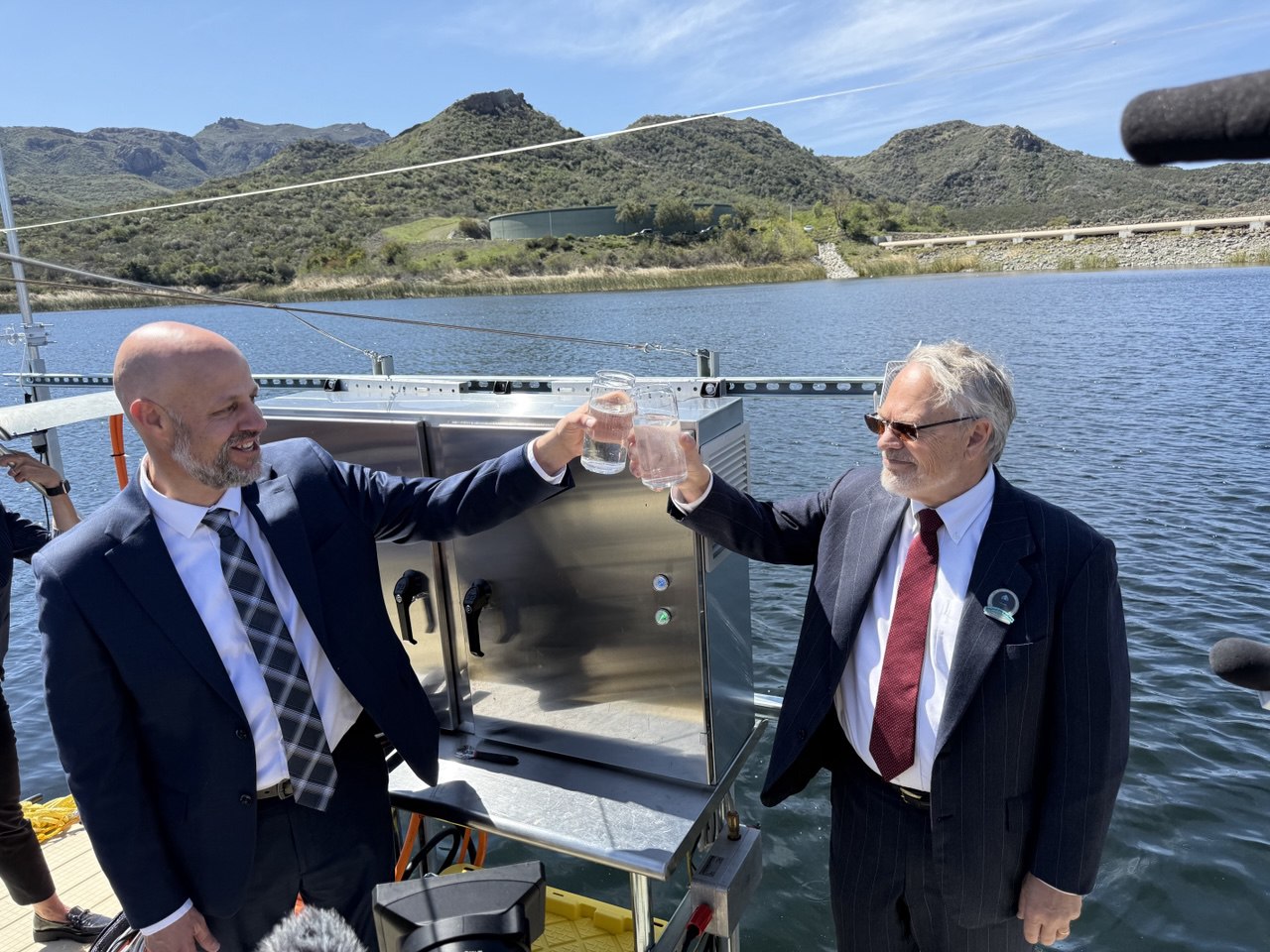Desalination Facts: Advantages and Innovations in Freshwater Supply
As climate change intensifies droughts and accelerates water scarcity, public awareness of desalination is rising. Once viewed as an expensive or environmentally risky process, desalination is now emerging as a vital tool for water security around the world. While concerns about cost, energy use, and brine disposal remain common, new technologies are transforming how desalination works, making it cleaner, more affordable, and more sustainable than ever before. The benefits of desalination extend far beyond simply providing freshwater—they include stabilizing water supplies for agriculture, industry, and growing cities. As these advantages of desalination become more widely recognized, the global focus is shifting toward ensuring the process is both efficient and environmentally responsible. The need for greener, more ocean-friendly desalination options has never been greater.
Facts About Desalination
A Drought-Resistant Water Source
Desalination is the process of removing salt and impurities from seawater or brackish water to produce clean, drinkable freshwater. Unlike rivers and aquifers, the ocean does not dry up, making desalination a reliable solution even in times of prolonged drought USGS https://www.usgs.gov/water-science-school/science/desalination?. Today, more than 300 million people worldwide rely on desalinated water for part or all of their daily needs. There are now over 20,000 desalination plants operating globally, particularly in drought-prone regions such as the Middle East, North Africa, parts of California, and Australia https://idadesal.org/wp-content/uploads/2019/04/The-state-of-desalination-2019.pdf?
Supports Economic Growth
Access to freshwater underpins agriculture, industrial production, and urban development. By supplementing traditional water sources, desalination fuels sustainable growth and creates stability for communities and industries. It enables farming in arid zones, supports manufacturing by providing the consistent, high-quality water required for cooling, processing, and cleaning in production facilities, and allows expanding cities to thrive without overburdening existing water systems. In manufacturing, reliable water supply is essential for maintaining production efficiency, product quality, and equipment longevity. Sectors such as semiconductor fabrication, pharmaceuticals, food and beverage processing, and metal finishing depend on ultra-pure water for precise chemical reactions and contamination control. Desalinated water—especially when integrated with advanced treatment systems—can meet these exacting standards, helping manufacturers minimize downtime, reduce waste, and achieve sustainability goals in regions facing water scarcity.
Improves Water Security
Desalination enhances resilience by reducing dependence on shared or shrinking freshwater sources. In regions where rivers and aquifers are overdrawn, desalination protects lakes, rivers, and groundwater from overuse, preserving fragile ecosystems and ensuring more equitable access to water. This shift helps safeguard biodiversity (https://pacinst.org/wp-content/uploads/2015/01/desalination-grain-of-salt.pdf?) while improving regional and global water security.
Growing Global Adoption
Desalination is no longer a niche technology reserved for the world’s driest nations. It has become a critical part of the global freshwater supply portfolio. Countries such as Saudi Arabia, Israel, the United Arab Emirates, Australia, and Spain rely heavily on desalinated water. In California, desalination is increasingly used to bolster municipal and industrial water supplies. Globally, over 300 million people depend on desalinated water https://montereybay.noaa.gov/resourcepro/resmanissues/desalination.html? , and that number continues to grow each year
Common Desalination Myths vs. Facts
Despite its growing adoption, desalination is still surrounded by myths about its energy use, environmental impact, and affordability. However, ongoing technological breakthroughs are addressing these challenges head-on, making desalination more efficient, accessible, and marine-safe than ever before.
Myth: Too Energy Intensive
Fact: Energy recovery devices have revolutionized desalination efficiency. Modern reverse osmosis systems now use pressure exchange technology to capture and reuse energy from the brine stream, cutting overall electricity consumption by up to 60%. OceanWell’s Water Farm 1 https://www.oceanwellwater.com/news/oceanwell-and-las-virgenes-municipal-water-district-launch-california-water-farm-1-with-capacity-of-60-million-gallons-per-day-as-six-agencies-join-project can be the future of safe, reliable drinking water that is environmentally friendly. Solar-powered desalination plants further reduce carbon emissions, allowing sustainable operation even in remote or off-grid locations. By harnessing abundant solar energy, these systems eliminate dependence on fossil fuels and make freshwater production both cleaner and more resilient. Advances in photovoltaic and concentrated solar power technologies now enable desalination units to operate efficiently during the day while storing excess energy for nighttime use. In coastal and island regions, solar-powered desalination provides a self-sufficient solution that reduces strain on electrical grids, lowers operational costs over time, and aligns with global goals for decarbonization and climate adaptation.
Myth: Harmful to Ocean Life
Fact: Advances in subsea modular design and brine management are dramatically reducing environmental risks. Systems like OceanWell’s LifeSafe technology incorporate zero-liquid discharge and deep-sea modular placement, minimizing brine concentration and protecting marine ecosystems. Operating hundreds of feet below the surface, OceanWell pods function in harmony with the marine environment, eliminating the need for large onshore facilities and preserving coastal habitats. OceanWell’s LifeSafe™ technology is a specially designed intake and circulation system developed by OceanWell for its deep-sea desalination pods. It is engineered to protect marine life and minimize ecological impact while harvesting seawater for fresh-water production. Key features include:
- Fine mesh intake screens (under 500 microns) and very low intake velocities, which reduce the risk of entrainment or impingement of small marine organisms.
- A circulation approach that returns microscopic organisms unharmed back to the deep sea, rather than capturing or killing them.
- A brine discharge method that avoids a concentrated outflow by leveraging deep-ocean currents and low-recovery operation, resulting in a benign brine plume that disperses rapidly.
Myth: Desalination is Only Available for Wealthy Nations
Fact: Affordable desalination is no longer out of reach for developing regions. New solar-powered and modular technologies enable cost-effective freshwater production without large-scale infrastructure. Compact systems can now be deployed near small coastal or island communities, making desalination accessible where traditional water treatment facilities are impractical or too expensive.
Redefining and Embracing the Benefits of Desalination
As the global water crisis intensifies, desalination offers a sustainable, scalable path forward for freshwater security. Modern innovations, —from energy recovery and solar integration to zero-liquid discharge and marine-safe systems, —are redefining what’s possible.
OceanWell stands at the forefront of this transformation. Its deep-sea desalination pods use the stable underwater environment to produce clean water efficiently while minimizing land use, energy demand, and ecological impact. With its next-generation, low-impact design, OceanWell demonstrates how desalination can meet humanity’s growing freshwater needs while protecting the planet’s most vital ecosystems.
Desalination is no longer the future, it’s the foundation of a water-secure world.
References
1. U.S. Geological Survey (USGS). “Desalination.” https://www.usgs.gov/special-topics/water-science-school/science/desalination
2. International Desalination Association (IDA). “Desalination by the Numbers.” https://idadesal.org/desalination-by-the-numbers/
3. International Desalination Association. “Resources & Global Reports.” https://idadesal.org/resources/reports/
4. National Oceanic and Atmospheric Administration (NOAA). “How Much Water Is in the Ocean?” https://oceanservice.noaa.gov/facts/oceanwater.html
5. Pacific Institute. “The Environmental Impacts of Desalination.” https://pacinst.org/publication/desalination-environmental-impacts/
6. Global Water Intelligence. “Desalination Technology Advancements.” https://www.globalwaterintel.com/
7. International Renewable Energy Agency (IRENA). “Renewable Desalination: Technology Outlook.” https://www.irena.org/publications/2020/Mar/Renewable-desalination

Related Posts
Heading













